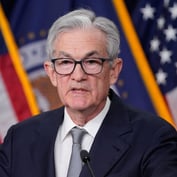India’s economy has been suffering, but the country has thought of a solution that could go a long way to ease its fiscal woes, at least by boosting its foreign currency reserves.
The country is going to try to win entrance into benchmark emerging market debt indexes—in particular, the JP Morgan Government Bond Index-Emerging Markets (GBI-EM), although it’s also said to have approached Barclays and Citi on its quest. If successful, the move could relieve the downward pressure on Turkey, Indonesia and Brazil, which have all been suffering by association in a currency crisis since the summer.
To that end, Finance Minister P. Chidambaram and other government officials were scheduled to meet with fund managers at PIMCO, Standard Life and Capital International in late October. Inflows from such institutional investors would go a long way toward helping the country increase reserves in foreign currency, with Barclays stating that India could see inflows of possibly as much as $20 billion in the first six months after entrée into such an index. Standard Chartered put the figure even higher, at $20–$40 billion.
That could help India lower the deficit in its balance of payments, and also lower borrowing costs, with the latter perhaps spurring a boost in growth—something the country has been anxious to stimulate.
But it’s far from a done deal. There are many changes to be made in India’s rules on registration and documentation, as well as due diligence rules that govern the entry of foreign institutional investors (FIIs) into its bond market. In addition, limits on how much FIIs can invest in the country’s sovereign debt would have to be lifted.
Still, that’s something that could actually happen, with the new head of the country’s central bank in charge. Raghuram Rajan, formerly chief economist of the International Monetary Fund and professor at the University of Chicago, became the head of the Reserve Bank of India early in September, and he’s already done enough to make the world sit up and take notice.
In the wake of India’s currency blowout this summer, Rajan was brought in to advise the prime minister, and then ascended to run RBI, according to John Blank, chief equity strategist at Zacks. “The first thing [Rajan] did was to get the International Finance Corporation of the World Bank to offer $1 billion of rupee bonds offshore. They’re going to broker the first round of getting more money into India. That was the first strike.”
Next, Rajan raised India’s repurchase rate from 7.25% to 7.5% as an inflation-fighting measure. The move was unexpected, given the country’s slowing economy, and Indian businesses were not happy about it, but economists in general seemed pleased, taking it as a sign that the new boss means business.








 October 24, 2013 at 09:12 PM
October 24, 2013 at 09:12 PM










